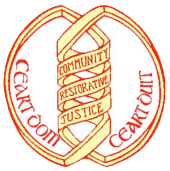CRJI have
spent the last week compiling a training programme for the introduction of
Restorative practice in a school in Dublin City. It is some years since CRJI
worked full time within the school setting culminating in a written account of
the three-year project in a publication called Beyond the Three R’s. The title
is a bit of a give away as we believe that not only should the school
curriculum focus on the Three R’s of reading, writing and arithmetic but also
on life skills such as conflict management and problem solving. We also believe
that the best results in doing this can be achieved by the use of restorative
approaches.
There
are now countless publications, training organisations and aids when it comes
to the subject of restorative justice in schools, not to mention the endless
list of consultants who will leave you spellbound on the subject. However, we
at CRJI like to take a much simpler view of it all and start with the greatest
gift that restorative justice can give us, a value base.
Restorative
practice is underpinned, informed and shaped by a value base of eight key
components. These are participation, interconnectedness, honesty, humility,
respect, accountability, hope and empowerment. Employing these values will
quickly send out the message that the school that does this creates a single
focus by saying that “we are a school
that values people”. This in turn will see an increase in academic activity for
if pupils, parents and staff feel valued then they embrace the wider project of
working together to educate our children.
Restorative
Justice approaches will also help to develop schools as listening and feeling
schools, thus building an environment where people matter, that it is important
to put people first and when dealing with issues that have harmed people the
restoration of relationships is a key element of the restorative process. This
of itself is an education process as we promote new ways of dealing with harm
by employing the restorative paradigm.
The
restorative paradigm rather than focus on rule breaking looks to what has
happened, who has been harmed and how we repair this harm. Again this puts
people at the heart of a process while also empowering them to play a central
role in the resolution. The empowerment of people should also be a focus of
education.
What
other benefits are there when we introduce these practices in the school
setting? There are different models of school practice, well documented and
articulated. In the case of the Dublin school we are looking at developing a
Restorative Peer Mediation initiative which will also mean a certain amount of
buy in from not only pupils but from staff who will need to be part of the
project.
We
would hope that this would become a first step for the school as they embrace
the restorative values and concepts. CRJI would prefer that schools go for a
whole school approach thus deepening and broadening the opportunities and
potential positive outcomes. However RJ is people centric and the starting
point of one will be different from another, what we really would like to see
is the same destination being reached, a truly wholly inclusive way of problem
solving which are underpinned by restorative values and processes. That would be
something.

